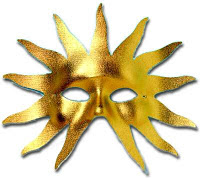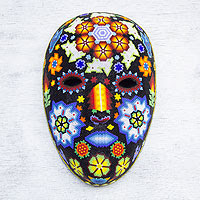Step 1: The Exhibition
-Picasso: The Artist and his Models
-The theme of this exhibition is Picasso's use of models in his artwork and how he uses them. It shows the ways that Picasso used his models to create his art in ways that imitate reality. He usually had his models be his friends or lovers which helped his easily use their energy to create art using various different mediums, converting them from three dimensional objects to two dimensional paintings.
Step 2: The Gallery
-All of the lighting in the exhibition is shining directly on the artworks and only the artworks, really showing their features and details.
-All of the walls in the exhibit are different colors, mostly being darker colors so the paintings stood out, and if the paintings were created out of mostly dark colors the wall would be brighter colors to contrast each other.
-There was nothing really around the floor of the exhibit so it was very easy to move around freely to wherever you wanted to go.
-There were some small sculptures around the floor here and there but nothing major so it didn't effect movement around the floor.
Step 3: The Artwork
-I didn't notice any special organization for the artworks seeing that they were all on separate walls, all located somewhat far away from each other.
-The artworks are similar in the way that most of his subjects in the art displayed were women, most likely some of his old lovers or friends.
-The artworks are different in the way that they are all abstract looking. Some of the artworks by Picasso are hard to tell that the subjects are women because of how abstractly shaped their bodies are. The style of these paintings compared to Henry Matisse's painting called "La Musique" which also is an artwork of two women, is completely different because in Matisse's art you can obviously tell that they are women.
-Some of the artworks are in more dramatic frames, some are in more subtle looking frames and then some artworks don't have frames at all.
-All of the artworks relate in the style, mostly being a woman standing facing the artist.
Artist: Pablo Picasso
Title of work: Femme en vert (Dora)
Media: Oil on canvas
Date: 1944
Size: 130 x 97 cm
Description: The painting shows the body of a woman with the face of what seems to be a cow sitting on a stool. The painting incorporates a lot of greens in it and then the cow's face and hands are blues and reds most likely to make it stand out.
Formal Analysis: The principle used in this painting that stood out the most was emphasis. The color of the woman's face and also her hands is really emphasized by the color of the body and the walls behind her.
The elements used were color and shape. Color is shown by the woman's whole body, face and the walls behind her, one emphasizing the other. Shape is used by the abstract shapes that the woman is created from making her unique.
Interpretation: Picasso is using this woman's body to express maybe what he really thinks of her as a person or maybe even what he thinks of women as a whole.
Artist: Pablo Picasso
Title of Work: Rape of the Sabine Women
Media: Oil on canvas
Date: 1963
Size: 195.3 x 131.1 cm
Source of picture: https://www.albrightknox.org/art/exhibitions/picasso-artist-and-his-models#special
Description: There is what looks like two women laying on the ground screaming and it looks like they are being attacked or are about to be attacked by two men on horses. The men also appear to be fighting. One of the men maybe could be trying to defend the women.
Formal Analysis: The principle used in this artwork is balance. Half of the art is focused on the two men on the horses and then the other half of the art is focused on the two women on the ground. It makes you look throughout the whole artwork.
The elements used in this artwork are shape and color. The objects in the painting are all abstractly shaped drawing your attention to them and then the women are in red dresses really emphasizing them to our eyes with the color.
Interpretation: Picasso is using the women's body language to show that they are really in fear maybe of one or both of the men who seem to be fighting.
Artist: Pablo Picasso
Title of work: The Women of Algiers (after Delacroix)
Media: Oil on canvas
Date: 1954
Size: 65.1 x 72.7 cm
Description: This is a painting of multiple women who appear to be sitting on the floor maybe inside a building or even outside so they could be homeless. They are also painted naked so maybe Picasso is trying to get a point across that they are poor and in need of help.
Formal Analysis: The principle used in this painting that stood out most to me is rhythm. There is a lot of rhythm throughout the walls and on the women's bodies.
The elements used in the art is shape, color and line. The women are once again abstractly painted creating an interesting shape to them. There is many different colors throughout the painting making everything stand out. There are also line throughout everything in the painting drawing your eyes in all different directions.
Interpretation: He is trying to show the struggle women of Algiers had to once face, being homeless and poor. I think he emphasized the situation by making them naked and made them blue and grey to show sadness.
The gallery visit's purpose of me carefully looking at every artwork in the Pablo Picasso visit made me appreciate artwork more than I did in my last art gallery visit. I really paid attention to all of the little details in the art and I really like what I got out of the experience. I hope for my next gallery visit I can say the same thing and get even more knowledge out of the things I am going to be viewing in the future.























